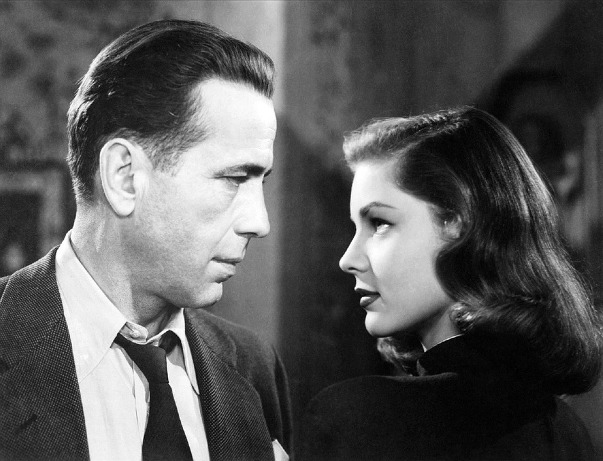
“Wait! Wait!”
The words seemed to come out of him involuntarily, as some kind of reflex, and they made me look up from what I was doing.
My husband had already been moving toward his office to search for something, and was now saying, “Just a second…I’ll find a piece of scratch paper…” I watched him go with question marks in both of my eyes.
He re-appeared in the doorway, triumphant, to find me still pressing a pen to the margin of a newspaper, about to draw a few circles, just to get the ink flowing. I was going to write out a card to someone and didn’t want the first letter to have a big, weird glob of ink in it. In reaching for the newspaper, I’d somehow caused this flurry of reaction and learned something: I’d married a nut.
Why on earth would anyone care if I scribbled in the margin of a local newspaper?
This is pretty much what I asked: “So, you only want these little marks to be on designated scratch paper? You mean, for real—that’s a thing for you?” He struggled to explain…it had something to do with preserving the best state, the native integrity, of things. It wasn’t something to carelessly and irretrievably mar on a whim, even if the thing in question was a highly disposable thing. I am sure I stared at him with disbelief, because he tried again, referencing one of my favorite authors next.
“You know how you would never write in one of your Anne Lamott books? It’s like that, only I draw the line at a different place.”
I have to say, it was an excellent attempt to communicate an idea that I was just not getting. It’s a great strategy: find the point where values are shared and then extrapolate.
However, instead of having a moment of communion with my dear and earnest husband, I got up and went to one of the many bookshelves in the house. I pulled down my copy of Bird by Bird, written by Anne Lamott. The subtitle accurately claims that it is about writing and life, big topics to be able to tote around in paperback form. There was a period of time—at least six months—when I carried it with me pretty much everywhere; if there is a book I could recognize blindfolded, it would be this one.
Once I’d pulled it off the shelf, I opened it to reveal a collection of completely inscrutable notes. Phone numbers, room numbers and mysterious phrases littered the first page. I have no idea what any of them refer to. I pulled down another book, as cherished as any in my personal stash. It was a gift from a friend who has since died, but who was rather angelic to start with. There is an inscription in the front from her, and the book was purchased for me because she knew that reading a library copy had marked an important turning point in my life. It’s a cornerstone book in my collection. The title page is half missing, the bottom part torn out to use as scratch paper and left behind somewhere, I don’t know where.
What I can see at a glance is that these are the books I’ve loved most. They haven’t retained their pristine state. They are battered and bear the marks of having been within reach on many different occasions. I can see that they have been part of daily life; they were within reach time and again because I wanted them close by. My way of marking them as chosen, as valued, has been to materially fold them into my own story. My husband’s way of valuing things is to honor their individual and intrinsic specifics, to protect those specifics from the whirlwind of life; his things don’t get dinged once they are under his care.
We don’t actually have a shared value to use as a starting place on this one.
It’s a delicate spot for a couple to harbor such a difference; a lot could go wrong. It would be so easy to accidentally insult one another with the best and purest of intentions. It’s fascinating to me that (mostly) we don’t. What lets us co-exist peacefully in our house isn’t always commonality, it’s acceptance. Specifically, acceptance of the bizarre notion that something can be counter-intuitive, even outright alien, and still be really good.
Here’s what I have noticed about being loved by someone to whom details matter:
He knows every angle of my features, every half-expression that crosses my face. He can tell at a glance whether I am fine, or struggling, or struggling but pretending to be fine. Whether someone else has scribbled on me or whether I have carelessly treated myself as disposable, he knows when something is off. When my outline is nicked, it registers immediately.
This is the way he loves the world.
As for me, details make me itch. I think in big, bounding loops and would rather go hungry than follow a recipe. I’m always and forever asking my husband if he has any big dreams I can throw myself behind, anything I can fuel with whatever is at hand.
This is how I love the world.
What intrigues me is how far two people can get despite differences that can’t be bridged, even with the sincerest of conversations. It makes me think that there are principles on which larger kinds of peace can stand: like world peace, just to pick the obvious one. Sometimes I’ll take any scrap of hope that we, as a species, can tolerate and even care for each other.
Sometimes that hope is found at home, just two people loving the world differently and together.
Author: Shai White-Gilbertson
Image: Pixabay
Editor: Catherine Monkman










Read 0 comments and reply